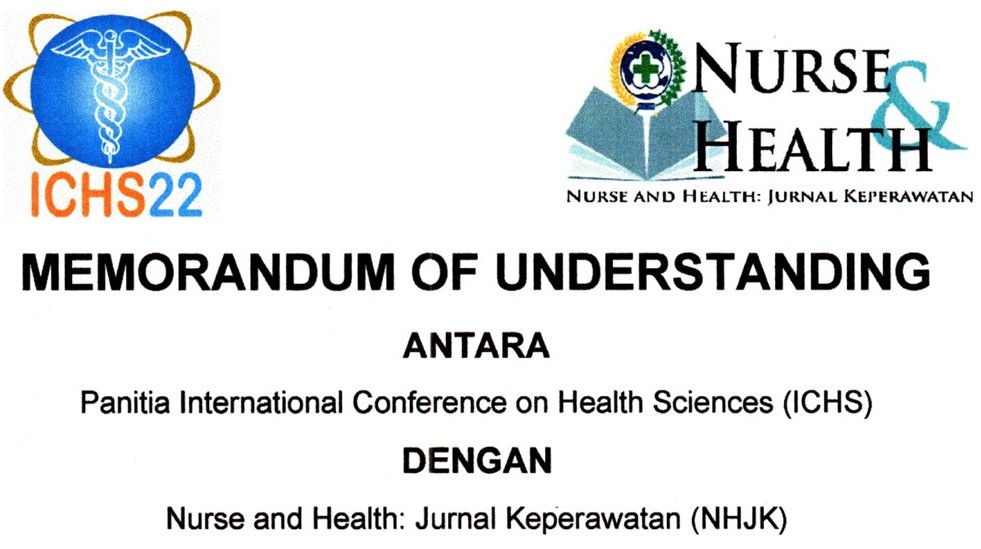ANALYSIS OF STIMULATION AUDITORY SINCE THE DEVELOPMENT OF LANGUAGE IN CHILDREN AGES 12-24 MONTHS IN 19 TH AND 20 TH NEIGHBORHOOD ASSOCIATION, TAWANGSARI BARAT VILLAGE, SIDOARJO, EAST JAVA PROVINCE, INDONESIA
Abstract
Background: Speech delay is a problem that occurs in society commonly found in children. One of the factors affecting language development is the early sensory perception stimulation. Objectives: This study was purposed to analyze the correlation between early sensory perception stimulation and language development in children aged 12-24 months. Methods: This observational study was conducted using a cross-sectional approach. It involved 34 parents and their children aged 12-24 months as the population, in which 32 parents and their children were taken as the samples using simple random sampling technique. The independent variable was the early sensory perception stimulation, whereas the dependent variable was language development. The instruments used in this study were questionnaire and observation sheets. Furthermore, the collected data were analyzed using Spearman's rank correlation test with the significance level of α = 0.05. Results: The results of this study showed that nearly all of the respondents (89.5%) provided their children with the early sensory perception stimulation sufficiently. Consequently, most of the children (62.5%) experienced language development sufficiently. Moreover, the correlation test using Spearman's rank test showed that Sig. = 0.000 (p < 0.05) illustrating that p <α so that Ho was rejected. This result showed that there was a correlation between early sensory perception stimulation and language development in children aged 12-24 months. Conclusion: The early sensory perception stimulation which is given well to children will result in optimal language development. Hence, the health workers, especially the nurses, are expected to provide the family with a counseling program about the importance of giving the early sensory perception stimulation to children to optimize their language development. Key words: Early sensory perception stimulation, language development.Downloads
References
Alimul, Aziz (2008). Pengantar Ilmu Kesehatan Anak Untuk Pendidikan Kebidanan. Jakarta: Salemba Medika.
Alimul, Aziz (2008). Metode Penelitian Keperawatan dan Teknik Analisis Data. Jakarta: Salemba Medika.
Andriana, Dian (2011). Tumbuh Kembang & Terapi Bermain Pada Anak. Jakarta: Salemba Medika.
Behrman, Kliegman dkk (2010). Ilmu Kesehatan Anak (Nelson Textbook of Pediatric). Jakarta: EGC
Depkes RI (2013). Pedoman Deteksi Kelainan dan Stimulasi Dini Tumbuh Kembang Balita. Jakarta
Depkes RI (2013). Pedoman Pelaksanaan Stimulasi, Deteksi dan Intervensi Dini Tumbuh Kembang Anak di Tingkat Pelayanan Kesehatan Dasar. Jakarta
Depkes RI (2013). Petunjuk Pelaksanaan Deteksi Tumbuh Kembang Balita Bagi Petugas Puskesmas. Jakarta
Hidayat, Azis Alimul. 2010. Pengantar IlmuKeperawatan Anak II. Jakarta: Salemba Medika
Hildayani, Rini dkk (2008). Psikologi Perkembangan Balita. Jakarta: Universitas Terbuk
Lia Dewi, Vivian Nanny (2010). Asuhan Neonatus Bayi dan Anak Balita. Jakarta: Salemba Medika
Mansur, Herawati. 2011. Psikologi Ibu dan Anak untuk Kebidanan. Jakarta: Salemba Medika
Notoatmodjo, Soekidjo. 2012. Metodologi Penelitian Kesehatan. Jakarta: Rineka Cipta
Nuriyanti, Lusi (2010). Psikologi Anak. Jakarta: PT.Indeks
Nursalam (2013). Metodologi Penelitian Ilmu Keperawatan. Jakarta: Salemba Medika.
Nursalam, dkk (2008). Asuhan Keperawatan Bayi dan Anak Untuk Perawat dan Bidan. Jakarta: Salemba Medika
Soetjiningsih (2015). Tumbuh Kembang Anak Edisi 2. Jakarta: EGC.
Soetjiningsih, Cristiana Hari (2012). Perkembangan Anak Sejak Pembuahan Sampai Dengan Kanak-Kanak Akhir. Jakarta: Prenada.
Suherman (2008). Buku Saku Perkembangan Anak. Jakarta: EGC.
Authors who publish with Nurse and Health: Jurnal Keperawatan agree to the following terms:
- Authors retain copyright licensed under a Creative Commons Attribution-NonCommercial 4.0 (CC BY-NC 4.0), which allows others to remix, tweak, and build upon the authors' work non-commercially, and although the others' new works must also acknowledge the authors and be non-commercial, they don't have to license their derivative works on the same terms.
- Authors are permitted and encouraged to post their work online (e.g., in institutional repositories or on their website) prior to and during the submission process, as it can lead to productive exchanges, as well as earlier and greater citation of published work (See The Effect of Open Access). Authors can archive pre-print and post-print or publisher's version/PDF.























